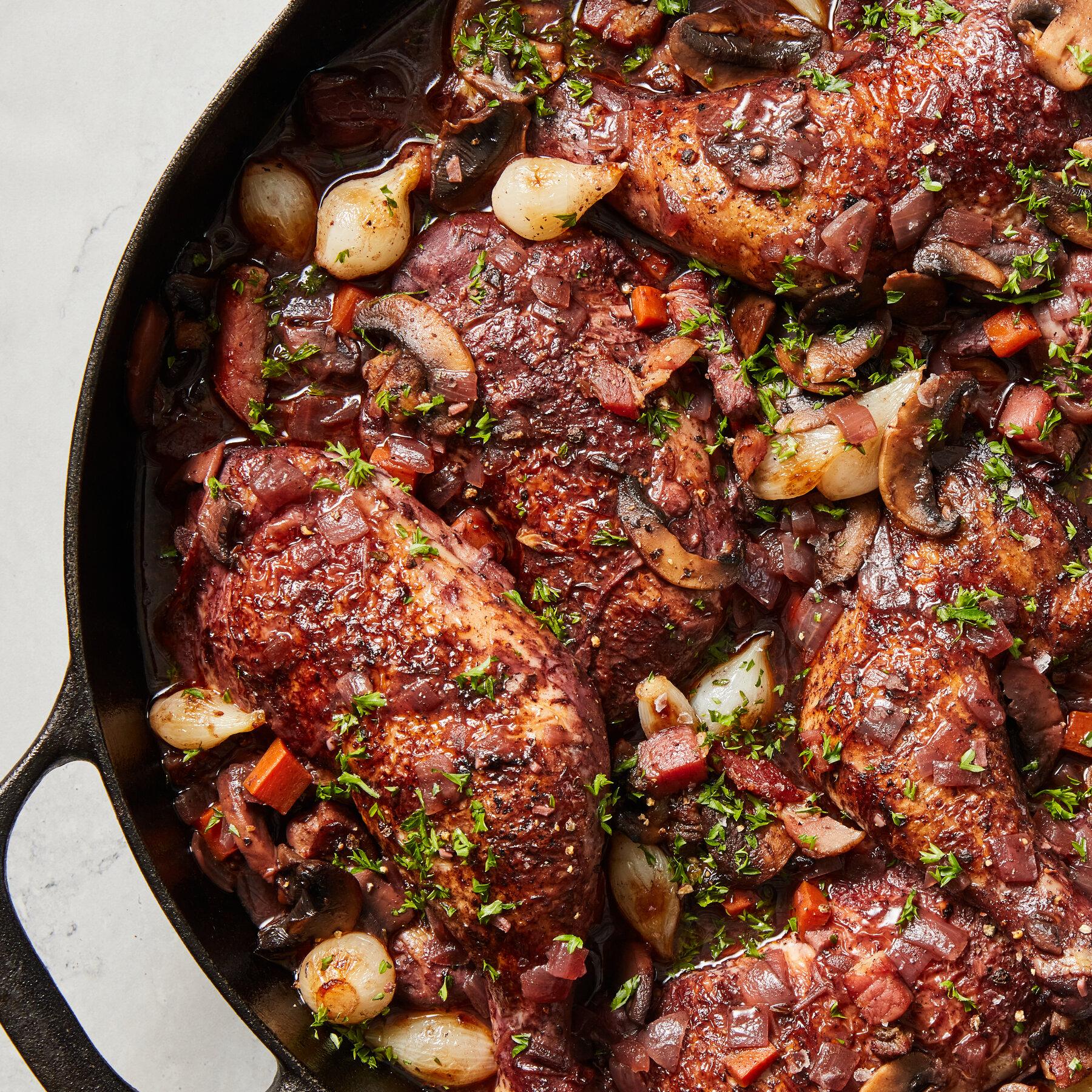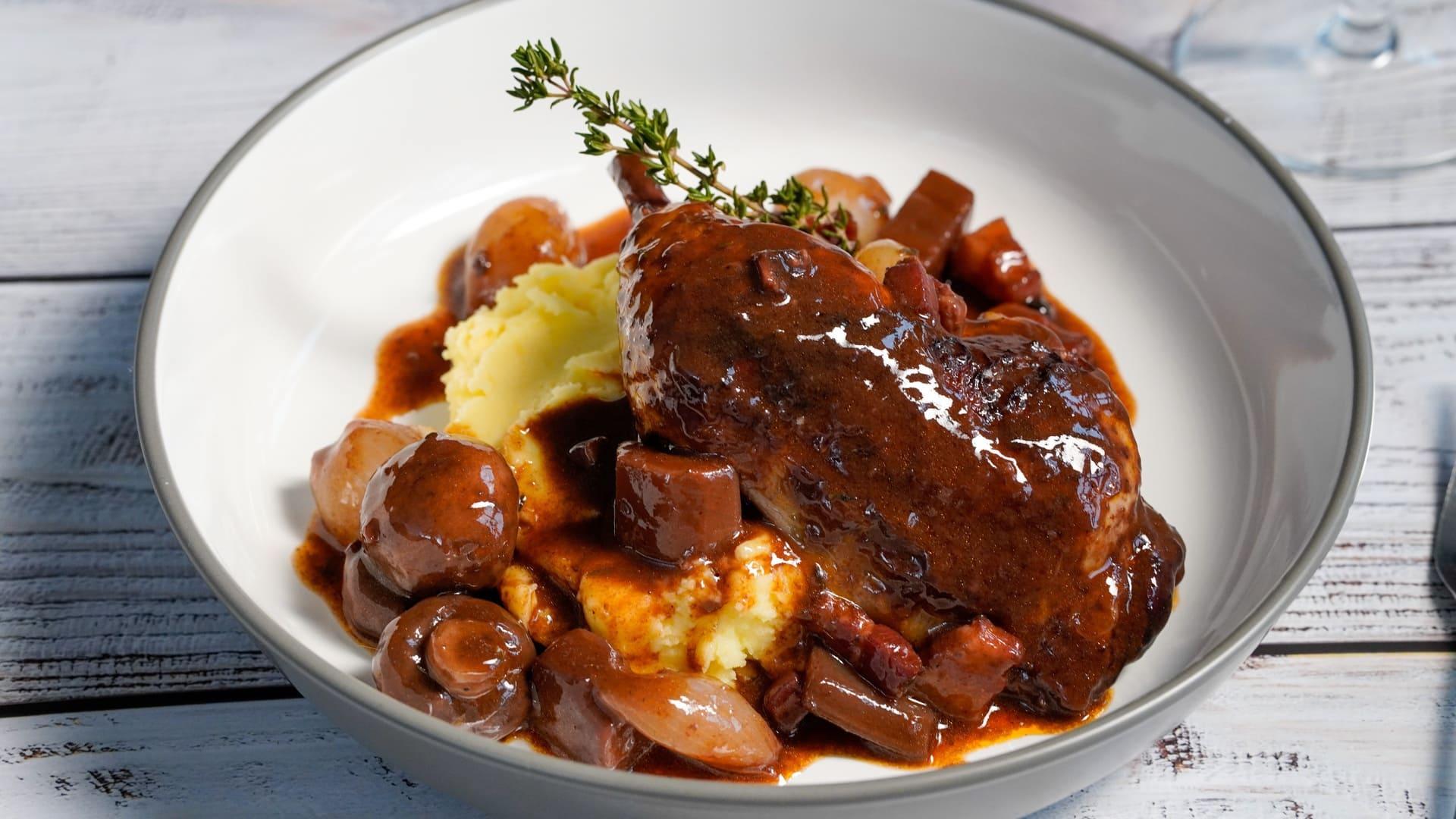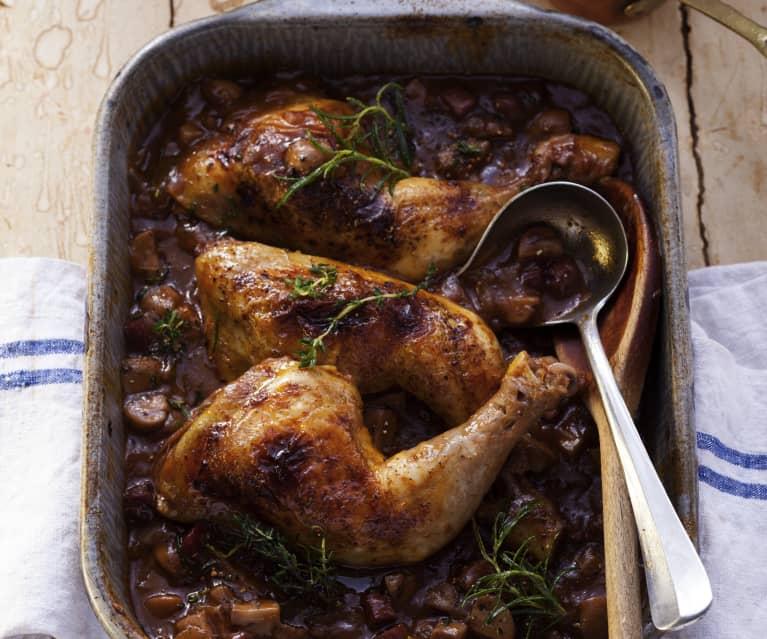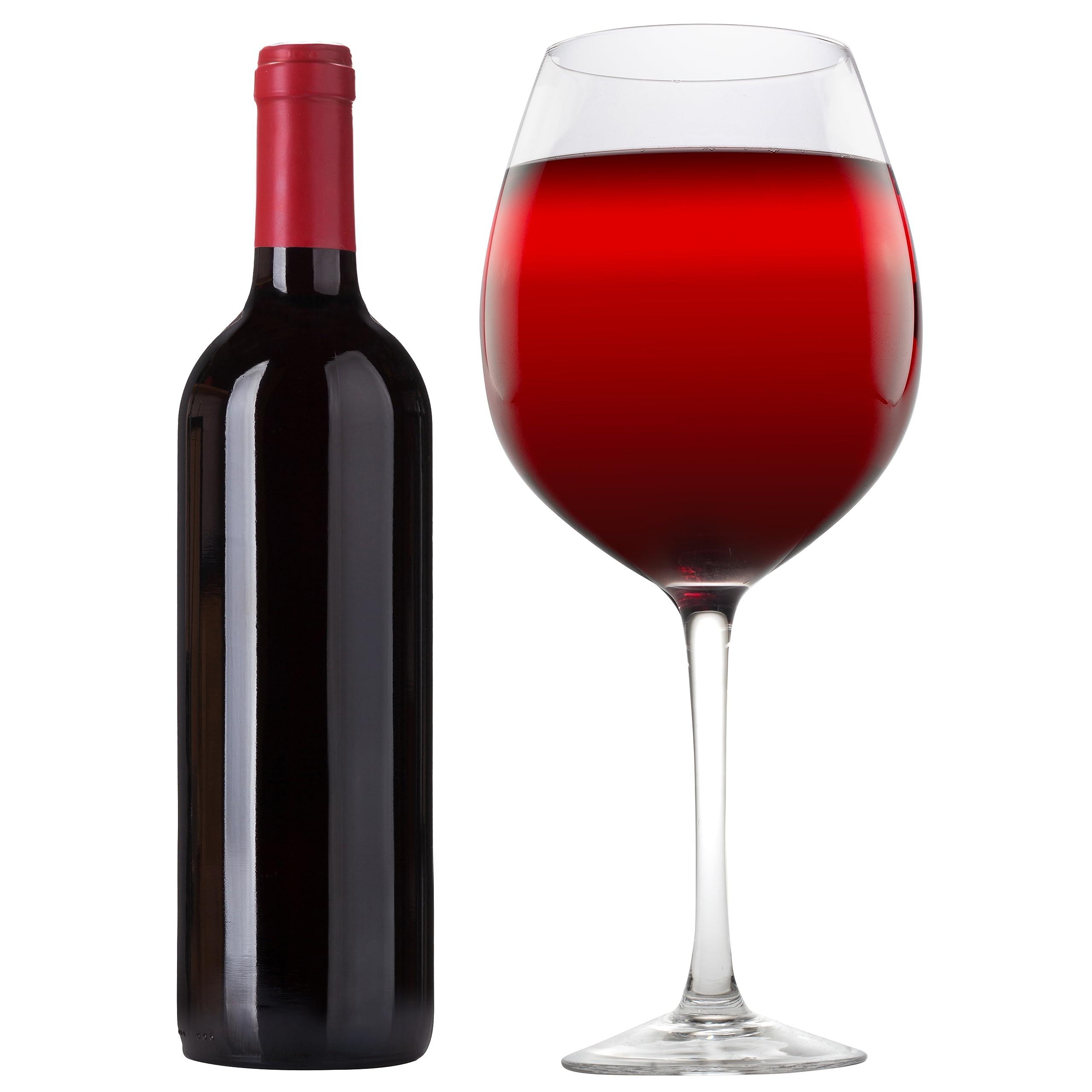When it comes to culinary masterpieces, few dishes evoke the rich tapestry of French cuisine quite like Coq au Vin. This iconic recipe, steeped in history and tradition, represents the essence of comfort food, marrying tender chicken with the deep, complex flavors of red wine, aromatic herbs, and earthy vegetables. Often regarded as a rustic dish of peasant origins, Coq au Vin has transcended its humble beginnings to secure a rightful place in gourmet kitchens around the world. As we delve into the origins, variations, and techniques that make this timeless classic a favorite for both home cooks and professional chefs alike, we invite you to explore the delightful nuances that a simple pot of chicken braised in wine can offer. Prepare to be inspired by the heartwarming story and delectable taste of Coq au Vin, a dish that continues to captivate palates and enrich dining experiences through the ages.
The Rich History Behind coq au Vin
Coq au Vin, a dish rich in history and flavor, traces its origins back to ancient Gaul. While the exact beginnings are often debated, it is widely believed that this rustic recipe was born out of necessity.Historically, the dish served as a means to tenderize tougher cuts of chicken, commonly enjoyed by peasant families. Over the centuries,it transitioned from countryside kitchens to the tables of the French aristocracy,capturing the hearts and palates of gourmets and home cooks alike. The key ingredients typically featured in this dish include:
- Chicken – traditionally rooster, but commonly chicken today
- Red Wine – a robust French red, usually Burgundy
- Mushrooms – adding earthy depth
- Bacon Lardons – for a smoky richness
- Herbs – notably thyme and bay leaves
The readiness of Coq au Vin embodies the essence of French culinary philosophy, emphasizing patience and technique. Originally cooked slowly over an open hearth or in rustic earthen pots, the modern adaptation often utilizes Dutch ovens or slow cookers. This method allows the flavors to meld beautifully, filling the air with enticing aromas. In addition to its rustic roots, the dish has made notable appearances in literature and film, entrenching itself in popular culture as a symbol of French gastronomy. A dish that began as a humble farm staple has undoubtedly etched its name into the canon of timeless cuisine.

Essential Ingredients for an Authentic Dish
To create an unforgettable Coq au Vin, the quality and authenticity of your ingredients are paramount. Each component brings its own unique flavor profile, crucial for the depth of this classic french dish. Start with bone-in chicken pieces; the richness of the bones is essential for a delectable sauce. Choose red wine with good acidity, preferably a Burgundy or other pinot noir, to add a layer of complexity and warmth. Complementing the chicken,aromatic vegetables like carrots,onions,and garlic are non-negotiables,providing a balanced sweetness and earthy undertone.
Don’t forget the essential aromatic herbs and seasonings. Fresh or dried thyme, bay leaves, and parsley lend fragrant notes that elevate the dish. If you enjoy a hint of smokiness, incorporate lardons or pancetta to impart richness to the sauce. the addition of mushrooms—preferably button or cremini—adds a savory depth, melding beautifully with the other ingredients.Below is a simple breakdown of key components:
| Ingredient | Role in Dish |
|---|---|
| Chicken | Base protein, brings depth |
| Red Wine | Provides acidity, richness |
| Vegetables | Add sweetness, texture |
| Herbs | Enhance aroma, flavor |
| Lardons | Add smokiness, richness |
| Mushrooms | Add savory depth |

Mastering the Cooking Technique: Tips and Tricks
To create the perfect Coq au Vin, selecting the right ingredients is crucial. Opt for a high-quality red wine, preferably a Burgundy, as this will significantly enhance the dish’s flavor profile. Additionally, ensure you use fresh herbs such as thyme and bay leaves, and always choose organic vegetables whenever possible. The cut of chicken also matters—bone-in, skin-on pieces will retain moisture and flavor better during the slow-cooking process.Here’s a quick checklist to keep in mind:
- Wine: Choose a full-bodied red.
- Chicken: Bone-in and skin-on for the best flavor.
- Herbs: Fresh thyme and bay leaves are preferable.
- Vegetables: Fresh onions, carrots, and mushrooms.
When it comes to technique,mastering the art of browning is essential. Sear the chicken in batches to achieve a deep golden crust, which imparts rich flavors. Don’t forget to deglaze the pot after browning; add in a splash of wine to scrape up those flavorful bits. After combining all ingredients, a slow, gentle simmer allows the flavors to deepen and meld beautifully. Consider these tips as you embark on your culinary journey:
- Brown in batches: Avoid overcrowding the pan.
- Deglaze: Use wine to enhance the sauce.
- Low and slow: Simmer for an enriched flavor.

Perfect Pairings: Wine and Side Dishes to Enhance Your Meal
When enjoying Coq au Vin, the rich flavors of this dish can be beautifully complemented by an array of thoughtfully selected side dishes.Here are some perfect pairings to enhance your meal:
- Garlic mashed Potatoes: Creamy and buttery, these potatoes soak up the savory sauce while adding a touch of comfort.
- Roasted Root Vegetables: A medley of carrots, parsnips, and turnips caramelized to perfection brings sweetness and earthiness to the table.
- Green Beans Almondine: Crisp green beans sautéed with toasted almonds add nuttiness and a fresh crunch, balancing the richness of the chicken.
For a more customary French approach, consider fluffy Pommes Anna or a light salad with vinaigrette to cut through the sumptuous flavors. Below is a simple table summarizing some classic side and wine pairings:
| Side Dish | Wine Pairing |
|---|---|
| Garlic Mashed Potatoes | Pinot Noir |
| Roasted Root Vegetables | Beaujolais |
| Green Beans Almondine | Chardonnay |
In Retrospect
As we conclude our journey through the rich flavors and comforting aromas of Coq au Vin, it’s clear that this classic dish transcends mere sustenance. With each tender bite,we taste the echoes of French culinary tradition,woven into a tapestry of history and culture that has stood the test of time. Whether you’re a seasoned chef or a curious home cook, preparing Coq au Vin invites you to a leisurely experience, where each step in the kitchen unfolds like a well-told story. From selecting the perfect bottle of red wine to savoring the final dish at your table, you partake in a ritual that celebrates community, warmth, and a love for good food. So,as you consider your next culinary adventure,remember this timeless classic; it not only nourishes the body but also nurtures the soul,reminding us that cooking is as much about joy and connection as it is indeed about flavor. bon appétit!